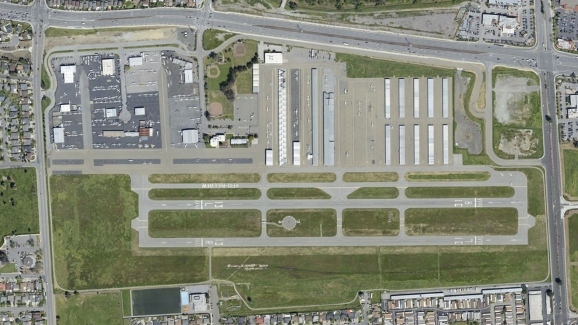
FAA, Santa Clara County Agree to Invest in Airports’ Future
CA – In a February 8 memorandum between the FAA and Santa Clara County, California, the parties agreed that the county would address several longstanding issues impacting safety and neglect at Reid-Hillview and San Martin airports. In turn, the FAA agreed to hold its investigation in abeyance for six months while the airport addresses those issues. The memo stems from a complaint the FAA issued against the county in late 2021 under the FAR Part 13 regulation governing FAA enforcement of federal airport requirements, citing the county’s “failure to address a significant number of significant safety concerns” at airports operated by the county. In more than a year since the FAA initiated that enforcement, the county has taken no action to mitigate these longstanding defects. The new memorandum gives the county 60 days to develop an action plan to “meet the parties’ common goal of operating the County Airports in a safe condition.”
“It appears that Santa Clara County officials have finally agreed they are not following FAA safety rules and are now willing to help the airport meet its required obligations and prepare the airport for the future, which will include unleaded aviation gasoline,” said AOPA President Mark Baker. “It’s just unfortunate that it has come to this. While no compromise is perfect, this agreement seems to indicate that resources will finally be spent to improve safety at these airports.”
The memorandum does not address the complaint AOPA filed in 2022 under a different regulation that provides third parties a procedure to initiate FAA enforcement of regulatory requirements. AOPA acted on behalf of local pilots and airport businesses affected by the county’s action to prohibit the sale of 100LL fuel at Reid-Hillview and San Martin airports. The February 8 memorandum does not extend the county’s February 28 deadline to file a response to AOPA’s complaint, and the FAA will ultimately decide whether the fuel prohibition violates federal rules. Local pilots cited a fuel-exhaustion accident they believe is related to a lack of appropriate fuel at Reid-Hillview. The county’s ban on 100LL also increases the potential for misfuelling, which has been reported to have occurred and can cause catastrophic engine failure.
Although the new memorandum in the Part 13 case did not outline details of a potential cooperative demonstration project to advance the effort to reduce aircraft lead emissions nationally, it does open the door for using a portion of available FAA funds to conduct an unleaded fuel monitoring program at Reid-Hillview. AOPA has been advocating for this type of program for some time, as it could expedite the national transition to unleaded fuel. In September, the FAA approved supplemental type certificates for a 100-octane unleaded fuel developed by General Aviation Modifications Inc. of Ada, Oklahoma, which can be used safely in nearly every engine in the piston aviation fleet. The company is currently working to commercialize its fuel.
In addition, Cirrus Aircraft, a well-respected aircraft manufacturer, has been evaluating GAMI unleaded fuel in its aircraft with very positive results. Swift Fuels, of West Lafayette, Indiana, provides a 94-octane unleaded fuel to some California airports and other states. Still, many piston-engine aircraft in the fleet cannot use this lower-octane fuel. The company is also working on producing a 100-octane unleaded fuel and anticipates FAA approval this year.